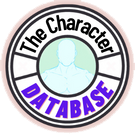Striking Strength: Difference between revisions
(Created page with "{| class="wikitable" !Articles about Statistics Explanation Pages |Tier • Attack Potency • Speed • Lifting Strength • Striking Strength • Durability • Intelligence • Range • Stamina |} == Introduction == Striking Strength refers to the amount of physical force an individual can deliver in a single strike, essentially representing their physical Attack Potency. Unlike Lifting Strength, which measures stat...") |
|||
| Line 21: | Line 21: | ||
'''High Hypoverse level''' | '''High Hypoverse level''' | ||
'''Quantum Level''' | |||
'''Atomic Level''' | |||
'''Micro Level''' | |||
'''Insect Level''' | |||
'''Below Average Human level''' | '''Below Average Human level''' | ||
Latest revision as of 08:41, 11 July 2024
| Articles about Statistics Explanation Pages | Tier • Attack Potency • Speed • Lifting Strength • Striking Strength • Durability • Intelligence • Range • Stamina |
|---|
Introduction
Striking Strength refers to the amount of physical force an individual can deliver in a single strike, essentially representing their physical Attack Potency. Unlike Lifting Strength, which measures static ability to support weight or mass, Striking Strength involves dynamic action, combining speed and mass to determine the force behind a character's attacks.
This category focuses on the power exerted during active combat or physical interactions rather than passive feats of strength. It necessitates a distinct classification system due to its reliance on factors like velocity and impact.
For more detailed explanations of these terms, please refer to our Attack Potency and Tiering System pages.
It's important to note that Striking Strength doesn't automatically scale from Attack Potency unless supported by specific feats. For instance, if a character can unleash an energy blast that vaporizes a city, their physical Striking Strength would only scale to that level if they can also physically harm opponents who withstand such an energy blast, and vice versa.
Consistent with Attack Potency conventions, a "+" sign is used to denote levels, such as "Mountain level+", not "Mountain+ level".
Striking Strength levels
Low Hypoverse level
Hypoverse level
High Hypoverse level
Quantum Level
Atomic Level
Micro Level
Insect Level
Below Average Human level
Human level
Athlete level
Street level
Wall level
Small Building level
Building level
Large Building level
City Block level
Multi-City Block level
Small Town level
Town level
Large Town level
Small City level
City level
Mountain level
Large Mountain level
Island level
Large Island level
Small Country level
Country level
Large Country level
Continent level
Multi-Continent level
Moon level
Small Planet level
Planet level
Large Planet level
Dwarf Star level
Small Star level
Star level
Large Star level
Solar System level
Multi-Solar System level
Galaxy level
Multi-Galaxy level
Universe level
High Universe level
Universe level+
Low Multiverse level
Multiverse level
Multiverse level+
Low Complex Multiverse level
Complex Multiverse level
High Complex Multiverse level
Hyperverse level
High Hyperverse level
Low Outerverse level
Outerverse level
Outerverse level+
High Outerverse level
Transcendent level:
Transcendent level+
High Transcendent level
High Transcendent level+
Inapplicable
